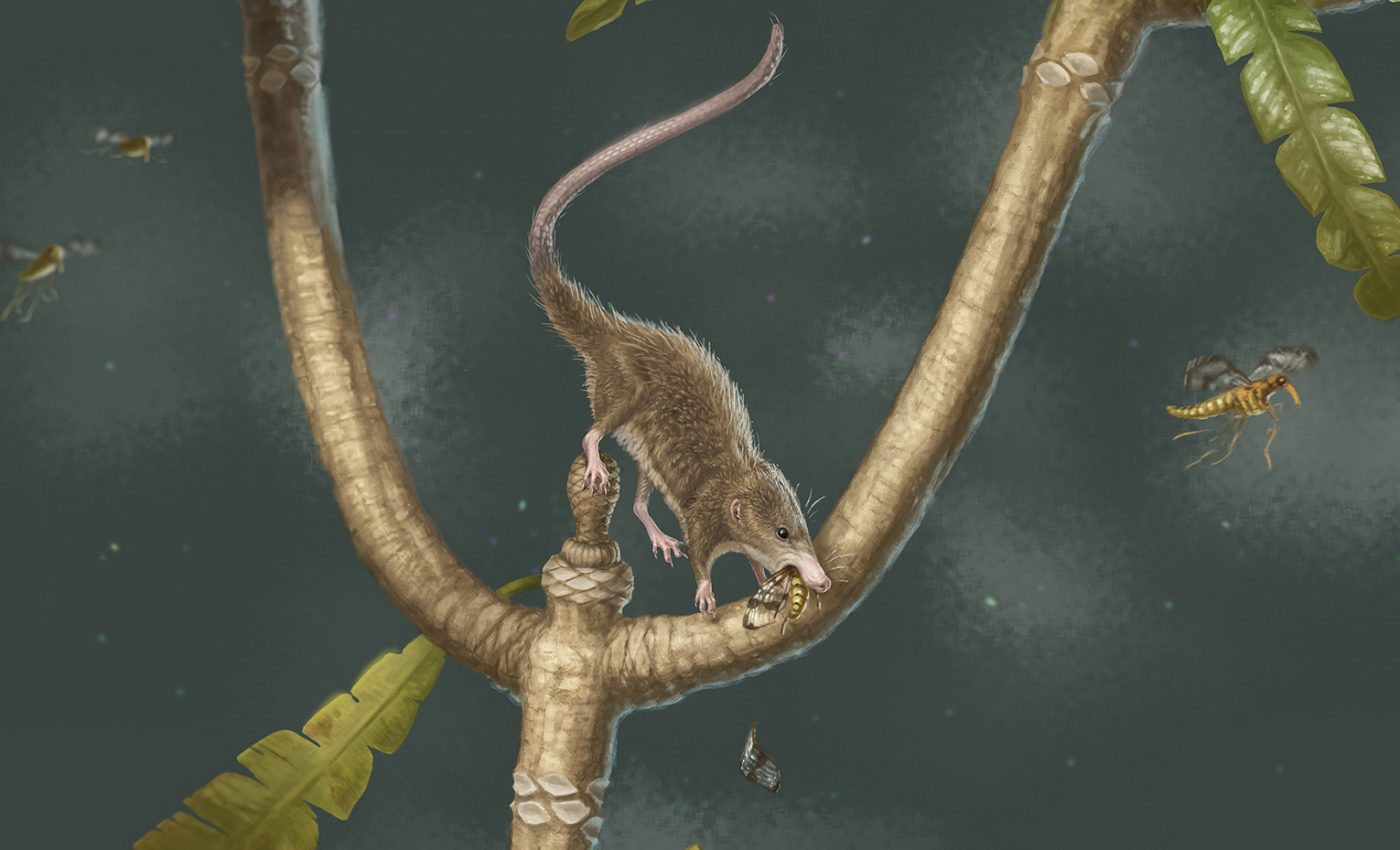
Jurassic fossil reveals how early mammals developed the ability to swallow
Researchers have successfully identified the earliest example of the ability to swallow in a 165-million-year-old fossil, dubbed Microdocodon gracilis, which was a tiny, shrew-like mammal. Microdocodon gracilis was one of the first mammals to develop modern hyoid bones, which link the back of the mouth (pharynx) to the esophagus and larynx, and help mammals, including humans, swallow food.
These findings are published in Science.
“Mammals have become so diverse today through the evolution of diverse ways to chew their food, weather it is insects, worms, meat, or plants. But no matter how differently mammals can chew, they all have to swallow in the same way,” said senior author Zhe-Xi Luo, PhD, a professor of organismal biology and anatomy at the University of Chicago. “Essentially, the specialized way for mammals to chew and then swallow is all made possible by the agile hyoid bones at the back of the throat.”
Scientists have wondered how and when the unique “U”-shaped hyoid structure found in modern mammals developed. Other vertebrates have hyoid bones, but their hyoids are less intricate and more rod-like, lacking mobile joints between segments. These creatures can only swallow food whole or in large chunks.
So when Microdocodon gracilis was discovered in China in 2014, scientists were thrilled to see the hyoid bones in exquisite condition.
“It is a pristine, beautiful fossil,” Luo said. “I was amazed by the exquisite preservation of this tiny fossil at the first sight. We got a sense that it was unusual, but we were puzzled about what was unusual about it. After taking detailed photographs and examining the fossil under a microscope, it dawned on us that this Jurassic animal has tiny hyoid bones much like those of modern mammals.”
“Now we are able for the first time to address how the crucial function for swallowing evolved among early mammals from the fossil record,” Luo continued. “The tiny hyoids of Microdocodon are a big milestone for interpreting the evolution of mammalian feeding function.”
Furthermore, by studying Microdocodon, Luo and his colleagues were able to track mammal evolution based on the status of the creature’s ear bones. Modern mammal jaws and middle ears are developed from or around the first pharyngeal arch, which are structures in a vertebrate embryo that develop into other recognizable bones and tissues. The hyoids are developed separately from the second and third pharyngeal arches.
Microdocodon, however, showed a primitive middle ear that was still attached to the jaw like that of other early mammals such as cynodonts, which is unlike the ear of modern mammals. However, its hyoids are like those of modern mammals.
“Hyoids and ear bones are all derivatives of the primordial vertebrate mouth and gill skeleton, with which our earliest fishlike ancestors fed and respired,” said postdoctoral scholar Bhart-Anjan Bhullar, PhD, from Yale University. “The jointed, mobile hyoid of Microdocodon coexists with an archaic middle ear — still attached to the lower jaw. Therefore, the building of the modern mammal entailed serial repurposing of a truly ancient system.”
—
By Olivia Harvey, Earth.com Staff Writer
Main Image Credit: April I. Neander














